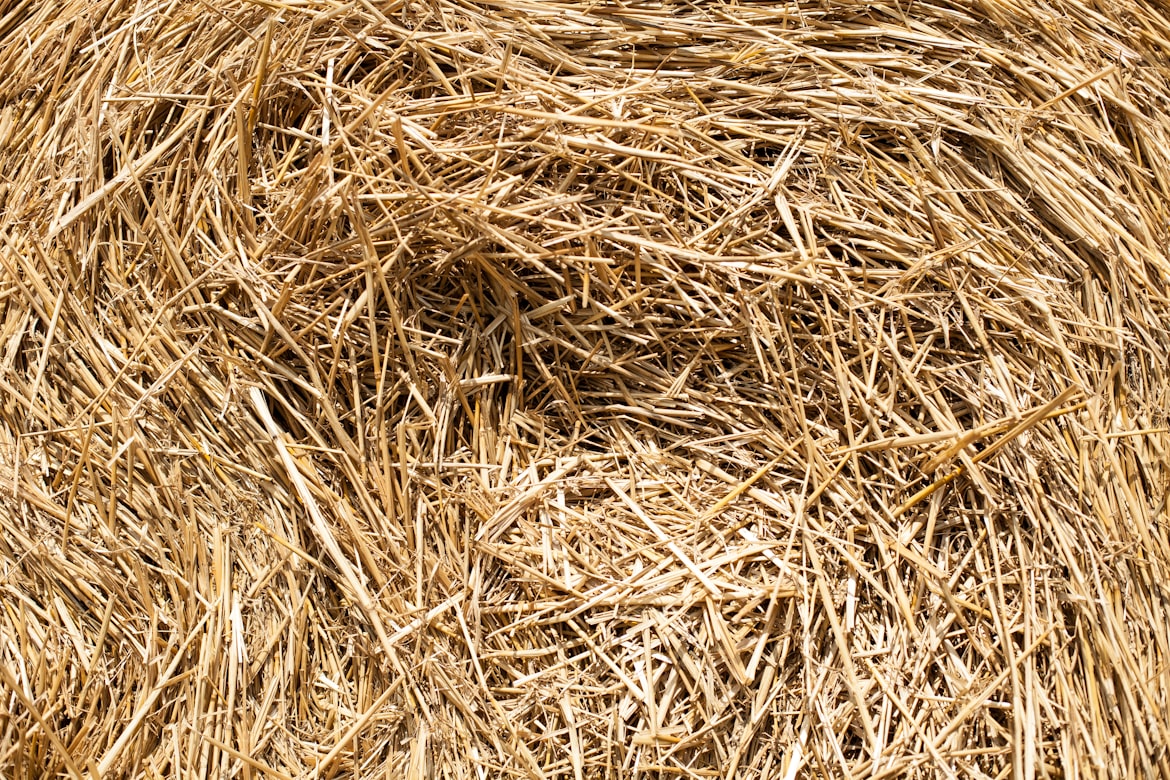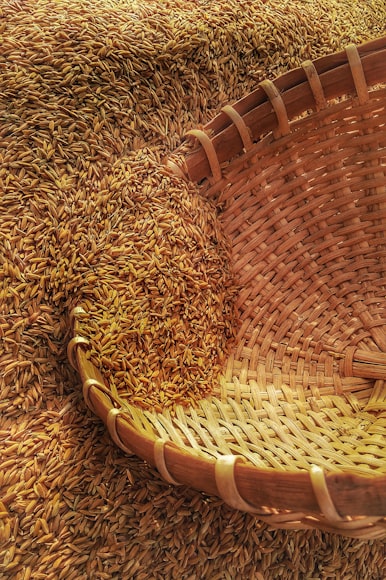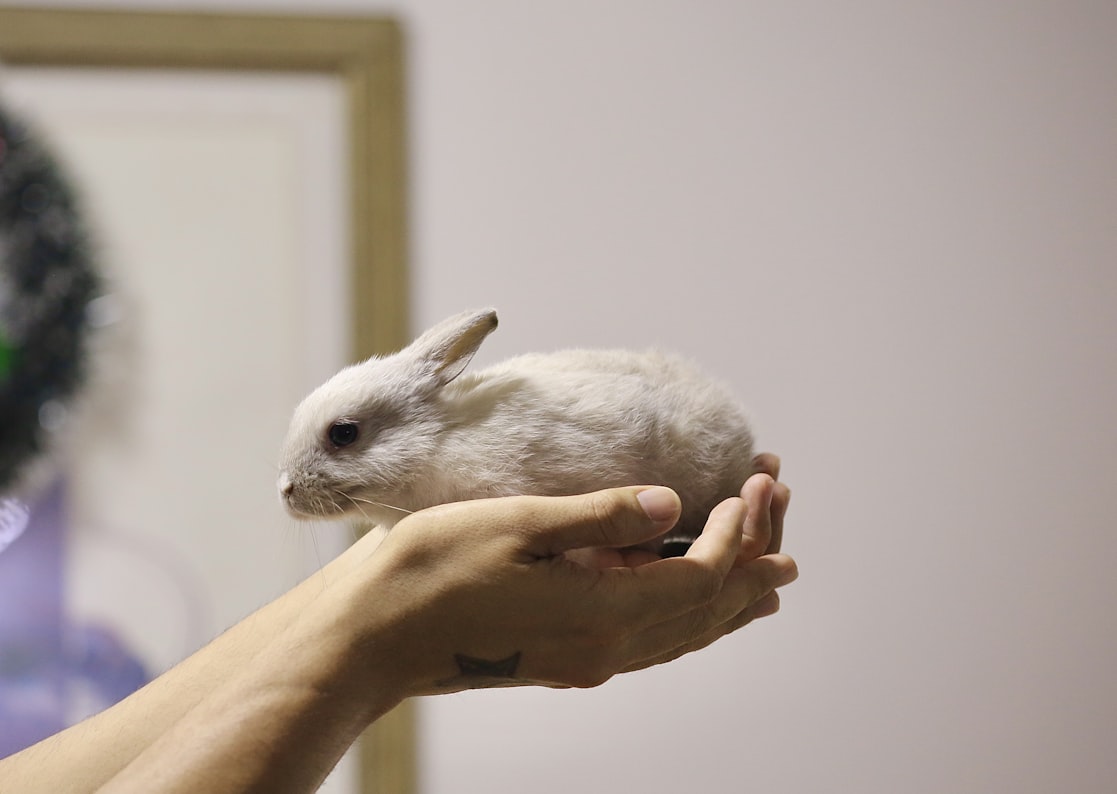As an Amazon Associate I earn from qualifying purchases.
Rabbits’ nests are often found in locations that amaze us. Rabbits have been known to make their homes in the midst of an open yard, even on occasion right in the middle.
You’re out for a stroll when you notice a rabbit’s nest that appears to have been assaulted by another animal. What are your options?
Naturally, you could be drawn towards the nest to see whether any baby bunnies had survived the assault. And there it is, a tiny bun that needs your love and care. But do you know what to feed a wild rabbit newborn?
What Do Wild Baby Bunnies Eat?

Let’s talk about the basics and discuss rabbits as a whole. Baby bunnies are only fed by their mother for a few minutes each day. A mother’s milk is high in nutrients, so feeding once is enough for the tiny bunny.
The mother rabbit usually feeds her babies at night to aid in their protection. The mother rabbit may be seen out during the day, which is why it’s critical to keep baby rabbits in nests alone unless you’re certain the mother has either given up on the nest or died. As a result, raising a wild baby rabbit is uncommon.
If you do come across abandoned wild newborn bunnies, here’s what to do.
First and foremost, you should have a clear understanding of the natural rabbit diet.
Rabbits are experts at finding food. When they don’t get their preferred foods, such as hays, fresh grasses, or clovers, they alter their feeding behavior quickly.
They also consume the bark of trees, buds of bushes, and leaves. However, they can’t survive on solely low-calorie foods for the entire duration of their existence.
Typically, you should not offer any one type of food to wild rabbits for the first time. However, if there is a lot of snow around them and they are suffering from hunger, you may give them specific foods.
Hay

Hay is the greatest thing to offer wild rabbits. It is secure and popular with them. Timothy hay, alfalfa hay (for baby bunny), orchard grass, and oat hays can all be offered.
Grains and Pellets

Give them grain if you want to. You should offer vegetables, rye, wheat, or something comparable. Before giving grain-based meals, consider the situation since grains attract rats, squirrels, and mice. A hay feeder can be used to feed wild bunnies.
Water
You may offer water in a bowl or plate. Winter is a common sight in nature documentaries, with wild baby bunnies not getting enough drinking water. So, fill up the cup.
Fruits

You may give wild baby rabbits fruits that are low in or devoid of sugar. It is expressly prohibited to offer sugary fruits to free-ranging rabbits. Even though sweets attract rabbits, they can lead to obesity and digestive issues. As a result, it would be better not to provide sugary fruits and vegetables to wild rabbits.
Vegetables

Most garden veggies are suitable for rabbits, with the exception of cabbage. To prevent overfilling the stomach of a wild rabbit, provide it with just a few vegetables at once. If the wild bunny eats an excessive amount of vegetables, it may get obese.
What Is The Difference Between Domestic Baby Rabbits and Wild Baby Bunnies?
First and foremost, let’s have a look at what a wild rabbit’s real diet is like. If you’ve ever seen a domestic rabbit, you’re probably aware of what they eat. However, wild rabbits are not always able to enjoy the same variety of vegetables and commercial rabbit feed that their tame counterparts do. Many pet owners offer their rabbits a healthy diet of grass, greens, and new vegetables. This begs the question, what would wild baby rabbits eat?
Wild baby rabbits are primarily herbivores, which means they eat only plants. This implies that they never consume meat or animal parts and only eat vegetation. According to long-term research on European rabbits, wild rabbits seldom if ever consume or even try to eat other animal flesh.
In the few cases when wild rabbits did eat meat, it was typically their own young. As a result, we can confidently assert that wild rabbits do not require meat. They survive on a diet of vegetation only. Nonetheless, this is a vague response and might need some fine-tuning.
How Much Do Wild Baby Bunnies Eat?
The quantity of food, determined by age, differs considerably based on the type of rabbit. It’s tough to determine your rabbit’s age using the Internet, so this is simply a guess.
Add a pinch of acidophilus to the mix for stronger gut flora. Formulas differ depending on the region.
Avoid Esbilac and puppy-formula baby formulas! ONLY FEED YOUR BABY TWICE A DAY TO KEEP THEM HEALTHY. It’s most convenient to use an eyedropper or 3 cc/ml syringe, to begin with. When feeding a binky, point the tip syringe down toward first and let them take only a few dabs at one feed until they are not stressed or used to it.
How To Feed Wild Baby Bunnies?

Step 1: Choose a location in your yard to put the food. If you don’t mind having wild rabbits in your yard, you may create an eating zone for them in your garden or lawn. Because wild rabbits like wooded or shrubby areas near the boundaries of a particular area, build a little brush heap next to the edge of your yard or garden for the wild baby bunnies. Leave a portion of your lawn uncut in the summer, when rabbits enjoy grass and weeds, allowing grass or weeds to grow up and providing a protected location for wild rabbits to eat.
Step 2: Feed the wild rabbits with fresh grass and hay. Grass and hay are both essential nutrients in a rabbit’s diet, whether wild or domesticated. The wild rabbits in your yard will have access to plenty of grass to chew on, but they won’t necessarily have easy access to hay. In moderation, rabbits should eat oats and timothy grass. Only old rabbits should be fed alfalfa hay. Adult bunnies should not be given alfalfa since it is high in protein, calcium, and sugar.
Step 3: Place out the pelleted rabbit food for the wild rabbits. Rabbit pellets are an excellent source of nutrients. For wild rabbits, pellets with seeds are ideal. Keep in mind that pellets are nutrient-dense, so you don’t need to give them too much at once. Pellets can be found at your local pet store. If you can estimate the wild rabbit’s dimensions, you may inquire about an adequate quantity of pellets for them at the pet shop.
Step 4: Give your wild rabbits fresh veggies. Give them at least three distinct kinds of greens every day, along with one that is high in vitamin A. Spinach, lettuce, broccoli leaves, parsley, basil mint, and celery leaves are all good choices for feeding the wild rabbits in your garden.
Step 5: Provide the baby bunnies with tiny amounts of fruit. Small berries are eaten by wild rabbits, but they will also consume other plant parts to balance out the fruit’s high sugar content. If you want to offer fruit to the wild rabbits, consider giving them blueberries, strawberries, raspberries, and blackberries instead of just one type.
What Are The Natural Predators of Wild Baby Bunnies?
Rabbits are adorable and reproduce fast because of their short 28-day pregnancy duration. Interestingly, a female rabbit can give birth to four to seven kits after giving birth for the first time.
Rabbits’ ability to proliferate rapidly is matched by predators’ assistance in annihilating the population. Because a rabbit’s main line of defense is to flee as fast as possible, they are vulnerable to larger, more powerful, and faster predators.
Foxes: Foxes would enjoy nothing more than a delicious rabbit as food. Although foxes don’t require bunnies for food, they are one of their major resources and can make up a significant portion of their diet if accessible.
Wolves: Wolves are also one of a rabbit’s most dangerous predators since they eat them for enjoyment. Wolves are meat-eaters that prefer large and little ungulates. They only consume bunnies as their primary food during droughts, however, because they supplement their primary diet with rabbits.
Dingoes: Dingoes are more like dogs in the wilderness. They eat rabbits as a primary food source since they can be found in great numbers.
Coyotes: Because coyotes are both scavengers and hunters, they aren’t particular about their meals. Vegetables are acceptable for them since they are omnivores. A coyote’s favorite food, though, is a delectable little mammal like a rabbit, rat, mote, or vole.
Raccoons: Raccoons can consume both plants and animals, such as wild baby bunnies if they can capture them. However, bunnies aren’t the greatest meal for a raccoon since raccoons are sluggish and prefer slow-moving creatures.
Bears: Bears consume everything from honey to ants, wild baby bunnies, deer, and even people! Bears eat whatever is available in the season and time, and they’ll eat veggies if the flesh runs out. They prefer meat more than vegetables, however, and will consume rabbits when accessible.
Snakes: Snakes are capable of consuming almost everything that moves, depending on their size. Cobras, mambas, and vipers can consume little rabbits, while large snakes like anacondas, pythons, and boas can swiftly swallow bigger rabbits as a whole.
Dogs: It’s possible for a domesticated dog to attack and devour a rabbit at any moment, based on its temperament and training. In addition, there are several domesticated dog breeds that were bred specifically to pursue and kill animals like rabbits.
Wild Cats: Cats, bobcats, leopards, and cougars are all big predators that attack any prey, including rabbits. These animals do not require rabbits for food and may consume rabbits after consuming huge game meat.
Weasels: Despite their tiny sizes, weasels are strong and able to thrive in group hunts, making it simple for them to consume rabbits of comparable size. They also have a high metabolic rate, a voracious appetite, and prey on their victims by breaking them from the neck area.
Ferrets: Ferrets are tiny carnivores that hunt and consume everything from insects to birds. They’re also nocturnal, which means they have decent night vision. This means that rabbits are usually ferret’s primary source of food.
Badgers: Small invertebrates and parasites make up the bulk of a badger’s diet. They can, however, hunt and consume rodents like rats as well as smaller animals like bunnies and mice.
Amazon and the Amazon logo are trademarks of Amazon.com, Inc, or its affiliates.

